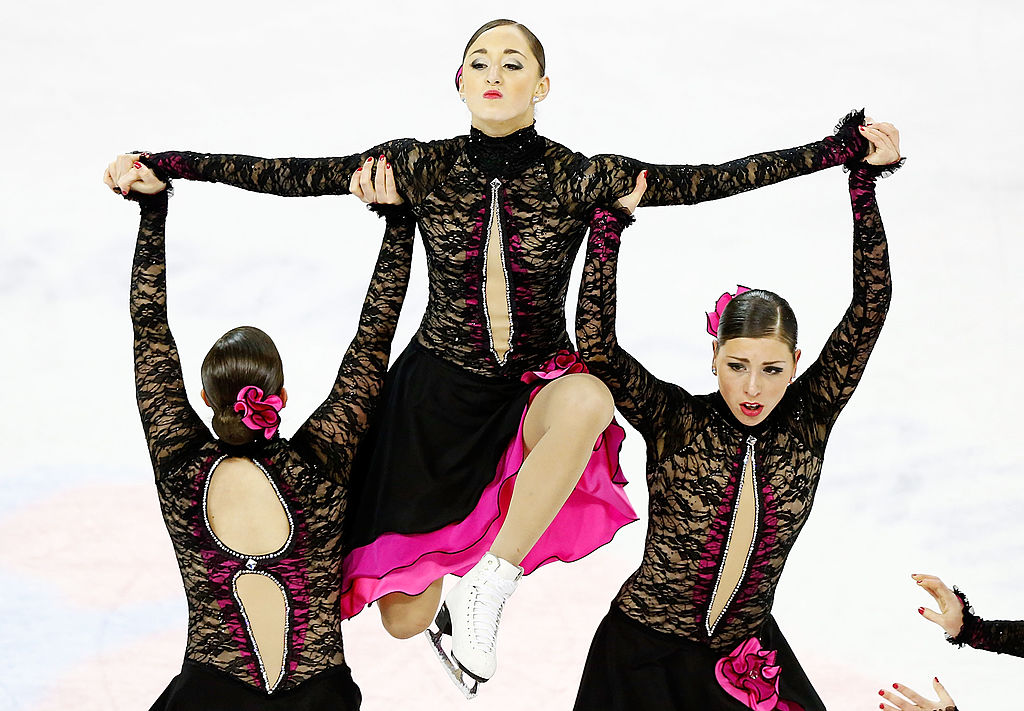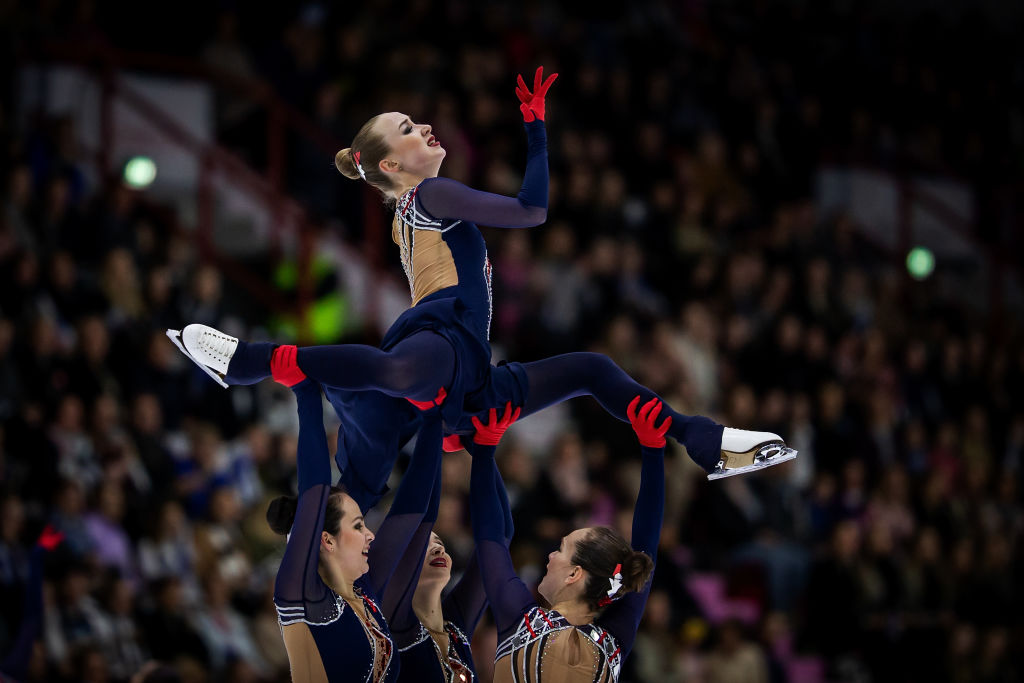In April 2005, the Scandinavium in Göteborg was packed with thousands of screaming fans who attended the fifth annual ISU World Synchronized Skating Championships. Unlike in 2012 and 2018 when the ISU event would return to Sweden, 2005 was a milestone year: it was the first time Senior teams were required to perform an overhead group lift on the ISU World stage.
The group lift evolved exponentially from 2003 to 2005. Though it was not officially required in the first four years at ISU World Synchronized Skating Championships, many teams began attempting a range of supported lifts in 2003. These lifts often featured two skaters and one liftee (i.e. Les Suprêmes’ assisted ‘cheerleader’ lift). In 2004, further experimentation led to a number of variations that are still seen today, including multiple gliding positions (i.e. Rockettes), stationary overhead lifts (i.e. Marigold Ice Unity), and even the first gliding overhead lift, as performed by Team Surprise.
From 2005-2009, the two required Moves in Isolation (MI) elements allowed teams to perform up to two group lifts. By the 2008 season, most competitive teams were executing two lifts with either three or four groups, while non-lifting skaters completed field moves.
In 2013, the Moves in Isolation (MI) element was renamed as the Group Lift (GL), and only one lift was required from 2010-2016.

Team Canada 2 (CAN) at the ISU World Synchronized Skating Championships 2013©Getty Images
From 2017 onward, two lifts were and are currently required in some form—either as two rotational (2017) or one rotational and one Creative (2018-present).
The group lift has seen a number of dramatic changes over the years, including an emphasis on flexibility/balance, position, difficult entry/exit and ice coverage. While the lift element remains unique to the Senior free category, recent developments have enabled junior teams to perform vaults and un-sustained lifts in their free program (elevated for under three seconds), preparing skaters for the future demands at the Senior level.

Team Tatarstan (RUS) at the ISU World Synchronized Skating Championships 2019©International Skating Union (ISU)